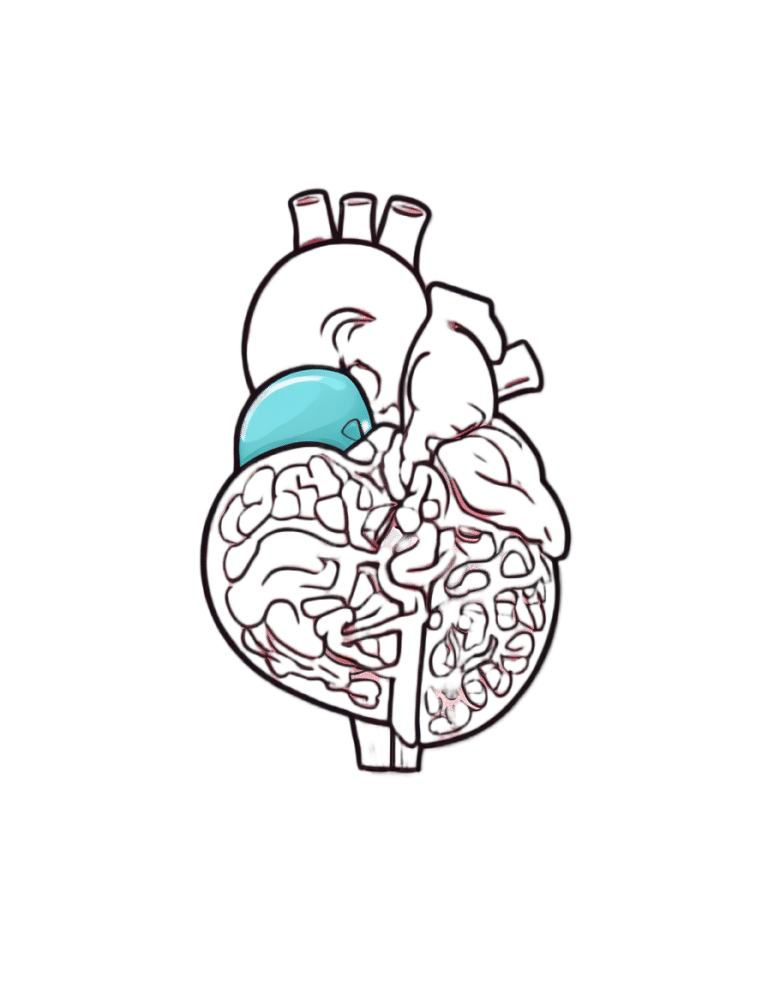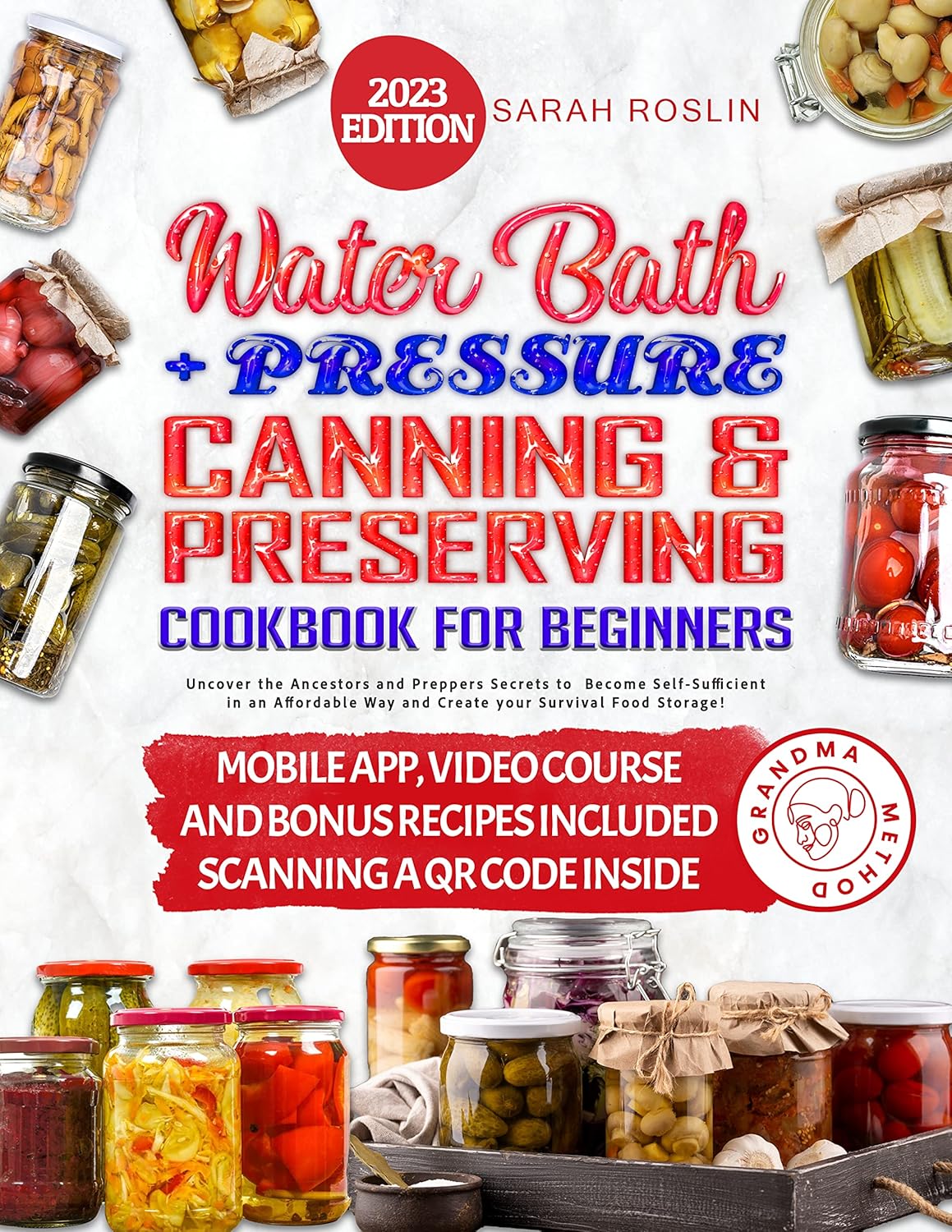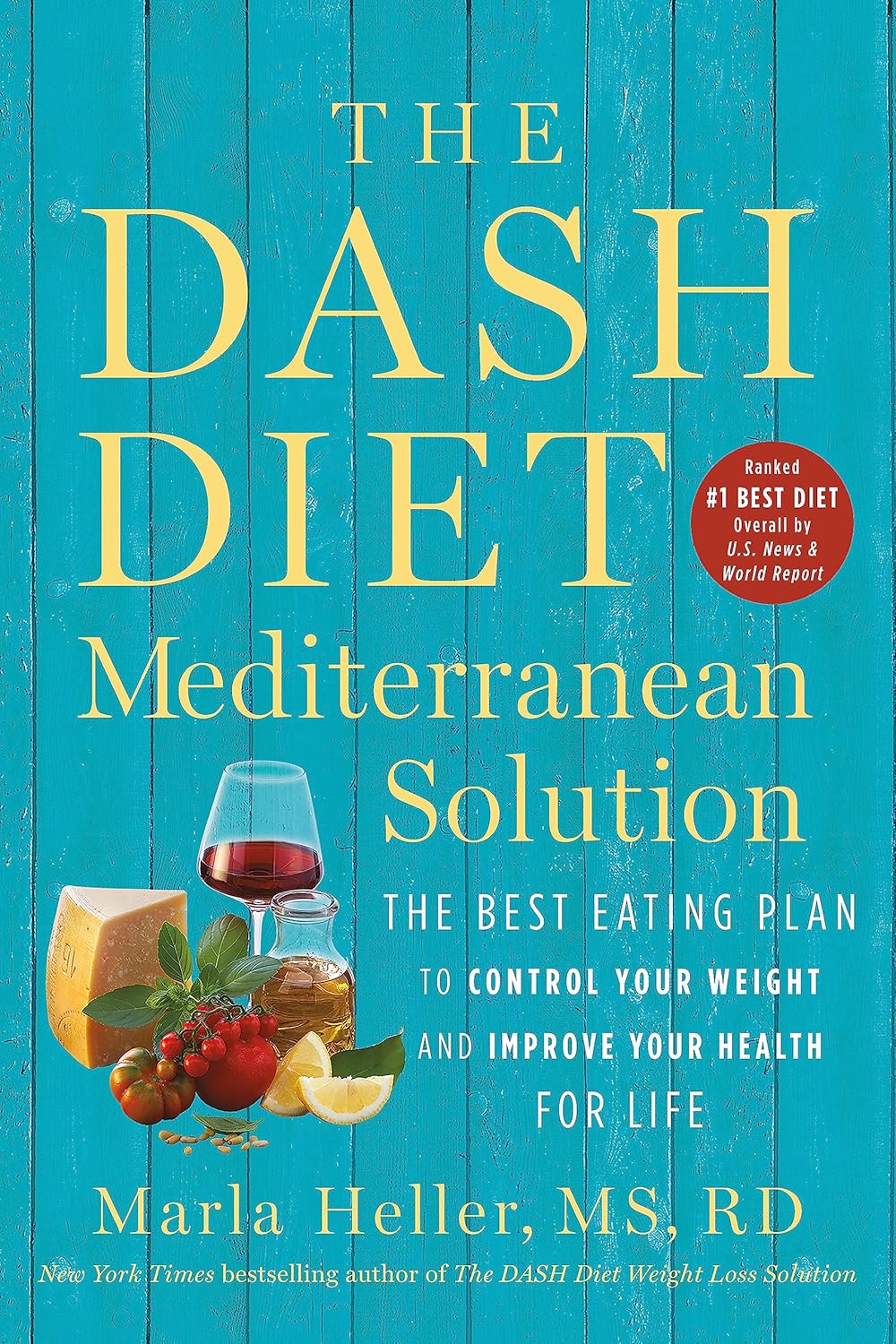
Eating Disorders: More Varied (And Prevalent) Than People Think
10almonds is reader-supported. We may, at no cost to you, receive a portion of sales if you purchase a product through a link in this article.
Disordered Eating Beyond The Stereotypes
Around 10% of Americans* have (or have had) an eating disorder. That might not seem like a high percentage, but that’s one in ten; do you know 10 people? If so, it might be a topic that’s near to you.
*Source: Social and economic cost of eating disorders in the United States of Americ
Our hope is that even if you yourself have never had such a problem in your life, today’s article will help arm you with knowledge. You never know who in your life might need your support.
Very misunderstood
Eating disorders are so widely misunderstood in so many ways that we nearly made this a Friday Mythbusting edition—but we preface those with a poll that we hope to be at least somewhat polarizing or provide a spectrum of belief. In this case, meanwhile, there’s a whole cluster of myths that cannot be summed up in one question. So, here we are doing a Psychology Sunday edition instead.
“Eating disorders aren’t that important”
Eating disorders are the second most deadly category of mental illness, second only to opioid addiction.
Anorexia specifically has the highest case mortality rate of any mental illness:
Source: National Association of Anorexia Nervosa & Associated Disorders: Eating Disorder Statistics
So please, if someone needs help with an eating disorder (including if it’s you), help them.
“Eating disorders are for angsty rebellious teens”
While there’s often an element of “this is the one thing I can control” to some eating disorders (including anorexia and bulimia), eating disorders very often present in early middle-age, very often amongst busy career-driven individuals using it as a coping mechanism to have a feeling of control in their hectic lives.
13% of women over 50 report current core eating disorder symptoms, and that is probably underreported.
Source: as above; scroll to near the bottom!
“Eating disorders are a female thing”
Nope. Officially, men represent around 25% of people diagnosed with eating disorders, but women are 5x more likely to get diagnosed, so you can do the math there. Women are also 1.5% more likely to receive treatment for it.
By the time men do get diagnosed, they’ve often done a lot more damage to their bodies because they, as well as other people, have overlooked the possibility of their eating being disordered, due to the stereotype of it being a female thing.
Source: as above again!
“Eating disorders are about body image”
They can be, but that’s far from the only kind!
Some can be about control of diet, not just for the sake of controlling one’s body, but purely for the sake of controlling the diet itself.
Still yet others can be not about body image or control, like “Avoidant/Restrictive Food Intake Disorder”, which in lay terms sometimes gets dismissed as “being a picky eater” or simply “losing one’s appetite”, but can be serious.
For example, a common presentation of the latter might be a person who is racked with guilt and/or anxiety, and simply stops eating, because either they don’t feel they deserve it, or “how can I eat at a time like this, when…?” but the time is an ongoing thing so their impromptu fast is too.
Still yet even more others might be about trying to regulate emotions by (in essence) self-medicating with food—not in the healthy “so eat some fruit and veg and nuts etc” sense, but in the “Binge-Eating Disorder” sense.
And that latter accounts for a lot of adults.
You can read more about these things here:
Psychology Today | Types of Eating Disorder ← it’s pop-science, but it’s a good overview
Take care! And if you have, or think you might have, an eating disorder, know that there are organizations that can and will offer help/support in a non-judgmental fashion. Here’s the ANAD’s eating disorder help resource page, for example.
Don’t Forget…
Did you arrive here from our newsletter? Don’t forget to return to the email to continue learning!
Recommended
Learn to Age Gracefully
Join the 98k+ American women taking control of their health & aging with our 100% free (and fun!) daily emails:

The Magic of L-theanine
10almonds is reader-supported. We may, at no cost to you, receive a portion of sales if you purchase a product through a link in this article.
All The Benefits Of Caffeine And More, Without The Drawbacks? What’s The Catch?
It just takes one extra supplement.
For many of us, our morning brew is practically a ritual, but caffeine can also cause all kinds of problems ranging from caffeine jitters to caffeine crashes to caffeine addiction and withdrawal. Surely, something could be better?
Well, yes it could! You doubtlessly know about green tea’s antioxidant properties, but its amino acid, l-theanine (which can be taken as a supplement with coffee, if you don’t enjoy green tea) has so much more to offer:
- L-theanine has been found to reduce stress responses—and let’s face it, when we most want/need a coffee is often when facing stress
- It also reduces anxiety, making it a very safe “downer” without the problems of, for example, alcohol—or other potentially addictive substances
- It’s far more than just that, though! Paradoxically, l-theanine also improves alertness (what other calming things promote alertness? Not so many)
- Part of its trick is that it also improves accuracy—whereas stimulants like caffeine may produce a twitchy, jumpy, responsiveness, l-theanine’s signature effect is a calm state of sharp readiness. Caffeine works by stimulating the adrenal gland and increasing blood pressure, while simultaneously blocking adenosine receptors so that your body doesn’t notice its own tiredness—which is why you’re likely to crash later, when the tiredness that had been masked, all hits at once. Instead, l-theanine taken with caffeine acts as a moderator of that, making for a longer, gentler curve. In terms of subjective experience, what this can mean for many people is: no more caffeine jitters!
- All this means that while l-theanine can boost all kinds of cognitive function, including alertness and accuracy, many like to take in the evening as it can also promote a good night’s sleep, ready to be at your best the next day.
- How much to take? 200mg is a commonly used dosage, which in supplement terms is usually a single capsule. A lot easier to take than the 40 cups of green tea that this dosage would otherwise be!
Share This Post

Water Bath + More Cookbook for Beginners – by Sarah Roslin
10almonds is reader-supported. We may, at no cost to you, receive a portion of sales if you purchase a product through a link in this article.
Whether you want to be prepared for the next major crisis that shuts down food supply chains, or just learn a new skill, this book provides the tools!
Especially beneficial if you also grow your own vegetables, but even you just buy those… Home-canned food is healthy, contains fewer additives and preservatives, and costs less in the long run.
Roslin teaches an array of methods, including most importantly:
- fermentation and pickling
- water bath canning, and
- pressure canning.
As for what’s inside? She covers not just vegetables, but also fruit, seafood, meat… Basically, anything that can be canned.
The book explains the tools and equipment you will need as well as how to perform it safely—as well as common mistakes to avoid!
Lest we be intimidated by the task of acquiring appropriate equipment, she also walks us through what we’ll need in that regard too!
Last but not least, there’s also a (sizeable) collection of simple, step-by-step recipes, catering to a wide variety of tastes.
Bottom line: a highly valuable resource that we recommend heartily.
Share This Post

The DASH Diet Mediterranean Solution – by Dr. Marla Heller
10almonds is reader-supported. We may, at no cost to you, receive a portion of sales if you purchase a product through a link in this article.
Sometimes, an author releases a series of books that could have just been one book, with various padding and rehashes. In some cases, naming no names
Dr. Mark Hyman, it means we have to carefully pick out the honestly very good and highly recommendable ones from the “you just republished for the extra income, didn’t you?” ones.In this case, today’s book is part of a series of books with very similar titles, and this one seems the most useful as a standalone book
The Mediterranean Diet is still the scientific world’s current “gold standard” in terms of most evidence-based diet for general health, and as we’ve written about, it can be tweaked to focus on being best for [your particular concern here]. In this case, it’s the DASH variant of the Mediterranean Diet, considered best for heart health specifically.
The style is repetitive, and possibly indicative of the author getting into a habit of having to pad books. Nevertheless, saying things too often is better than forgetting to say them, so hey. On which note, it is more of an educational book than a cookbook—it does have recipes, but not many.
Bottom line: if you’d like an introduction to the DASH variant of the Mediterranean Diet, this book will get you well-acquainted.
Click here to check out The DASH Diet Mediterranean Solution, and learn all about it!
Share This Post
Related Posts

The Power of Fun – by Catherine Price
10almonds is reader-supported. We may, at no cost to you, receive a portion of sales if you purchase a product through a link in this article.
It’s said that nobody’s dying regret is to wish they’d spent more time at the office, yet many of don’t make enough time for fun.
This book has been published with two different subtitles:
- Why fun is the key to a happy and healthy life
- How to feel alive again
One offers a sensible reason to read this book; the other offers a deeply emotional reason. Both are entirely valid.
Catherine Price sets out in this work to identify what fun actually is (she puts it at the intersection of playfulness, connection and flow) and how to have more of it (she gives a five-step method to build and integrate it into life).
In the category of criticism, this 334-page book is (in this reviewer’s opinion) a little padded and could have been an article instead. But the advice contained within it is sound, and the impact it can have might be profound.
Bottom line: if you find you’ve settled into a routine that’s perhaps comfortable, but not actually that much fun, this book will help you to liven things up.
Click here to check out The Power Of Fun, and feel more alive!
Don’t Forget…
Did you arrive here from our newsletter? Don’t forget to return to the email to continue learning!
Learn to Age Gracefully
Join the 98k+ American women taking control of their health & aging with our 100% free (and fun!) daily emails:

The Path to Longevity – by Dr. Luigi Fontana
10almonds is reader-supported. We may, at no cost to you, receive a portion of sales if you purchase a product through a link in this article.
We’ve reviewed other “expand your healthspan” books, and while they’re good (or else we wouldn’t include them), this is top-tier, up there with Dr. Greger’s books while being more accessible (more on this later).
This book is far more informational than opinionated, and while some reviewers have described the book as motivating them, that’s not at all the tone, and it’s clear that (beyond hoping for the reader to have to information to promote a long healthy life), the author has no particular agenda to push.
One example: while he gives a whole-foods, plant-based diet a “A+” rating, he puts the (often meat/fish-heavy) paleo diet at a close “A-“, depending on the animal products chosen (which can swing it a lot, and he discusses this in some detail).
In the category of criticism… This reviewer has none. Sometimes it seemed something was going unaddressed, but it would be addressed later.
Stylistically, the text is easy-reading and/but has a lot of references to hard science, complete with charts, diagrams, and so forth. The impression that this reviewer got is that Dr. Fontana took pains to convey as much science as possible, with (unlike Dr. Greger) as little jargon as possible. And that goes a long way.
Bottom line: if you’re looking for a “healthy aging” book that has a lot more science than “copy the Blue Zone supercentenarians and hope” without being so scientifically dense as “How Not To Die” or “How Not To Age“, then this is the book for you.
Click here to check out The Path to Longevity, and optimize the path you take!
Don’t Forget…
Did you arrive here from our newsletter? Don’t forget to return to the email to continue learning!
Learn to Age Gracefully
Join the 98k+ American women taking control of their health & aging with our 100% free (and fun!) daily emails:

Tiramisu Crunch Bites
10almonds is reader-supported. We may, at no cost to you, receive a portion of sales if you purchase a product through a link in this article.
It’s coffee, it’s creamy, it’s nutty, it’s chocolatey, what’s not to love? It has all the well-loved flavors of tiramisu, but this recipe is a simple one, and it’s essentially stuffed dates in a way you’ve never had them before. They’re delectable, decadent, and decidedly good for your health. These things are little nutrient-bombs that’ll keep you reaching for more.
You will need
- Coffee (we will discuss this)
- 150g (5.5oz) mascarpone (if vegan or lactose-intolerant, can be substituted with vegan varieties, or at a pinch, pressed silken tofu)
- 500g (1lb) dates (Medjool are ideal)
- Twice as many almonds as you have dates
- 50g (2oz) dark chocolate (the darkest, bitterest, you can find)
- Edible flower petals if you can source them (some shops sell dried rose petals for this purpose)
Method
(we suggest you read everything at least once before doing anything)
1) Take the mascarpone and whisk (or blend) it with the coffee. What kind of coffee, you ask? Many will use instant coffee (1tbsp granules mixed with enough boiling water to dissolve it), and that is actually healthiest (counterintuitive but true) but if you care for flavor over health, and have the means to make espresso, make it ristretto (so, stop it halfway through filling up an espresso cup), let it cool, and use that. Absolute bonus for flavor (not for health): if you have the means to make Turkish coffee, use an equivalent amount of that (again, cooled).
You will now have coffee-flavoured mascarpone. It’s great for your gut and full of antioxidant polyphenols. Set it aside for the moment.
2) Take the dark chocolate and melt it. Please don’t microwave it or try to do it in a pan directly over the hob; instead, you will need to use a Bain-Marie. If you don’t have one made-for-purpose, you can place a metal or heatproof glass bowl in a saucepan, with something to stop it from touching the floor of the pan. Then boil water in the pan (without letting the water get into the bowl), and melt the chocolate in the bowl—this will allow you to melt it evenly without burning the chocolate.
You will now have melted dark chocolate. It has its own set of polyphenols, and is great for everything from the brain to the gut microbiome.
3) Cut the dates lengthways on one side and remove the stone. Stuff them carefully with the coffee-flavored mascarpone (you can use a teaspoon, or use a piping kit if you have one). Add a couple of almonds to each one. Place them all on a big plate, and drizzle the melted chocolate over them. Add the petals if you have them.
The dates and almonds deliver extra vitamins and minerals in abundance (not to mention, lots of fiber), and also are an amazing combination even just by themselves. With the mascarpone and chocolate added, this winning on new levels. We’re not done yet, though…
4) Chill them in the fridge for about 30 minutes.
Serve!

Learn more
For those interested in some of the science of what we have going on today:
- Make The Heart-Healthiest Coffee ← this is about cafestol content and why instant is heart-healthiest (alas)
- The Bitter Truth About Coffee (Or Is It) ← this is about the health benefits (and some risks, but mostly benefits) of coffee
- Why You Should Diversify Your Nuts ← almonds are a top-tier choice, but other nuts are good too! This recipe could work well with hazelnuts, for example (we wouldn’t call it “tiramisu crunch bites” in that case, though, since the flavor profile would change)
- Which Sugars Are Healthier, And Which Are Just The Same? ← for any worrying “aren’t dates sugary, though?”
Enjoy!
Don’t Forget…
Did you arrive here from our newsletter? Don’t forget to return to the email to continue learning!
Learn to Age Gracefully
Join the 98k+ American women taking control of their health & aging with our 100% free (and fun!) daily emails:








